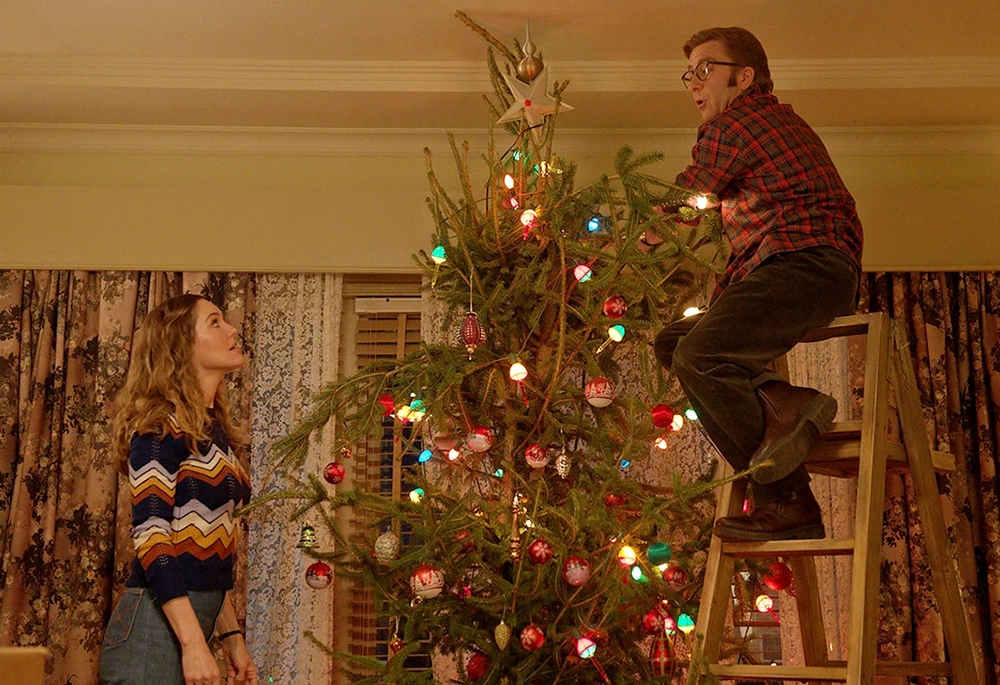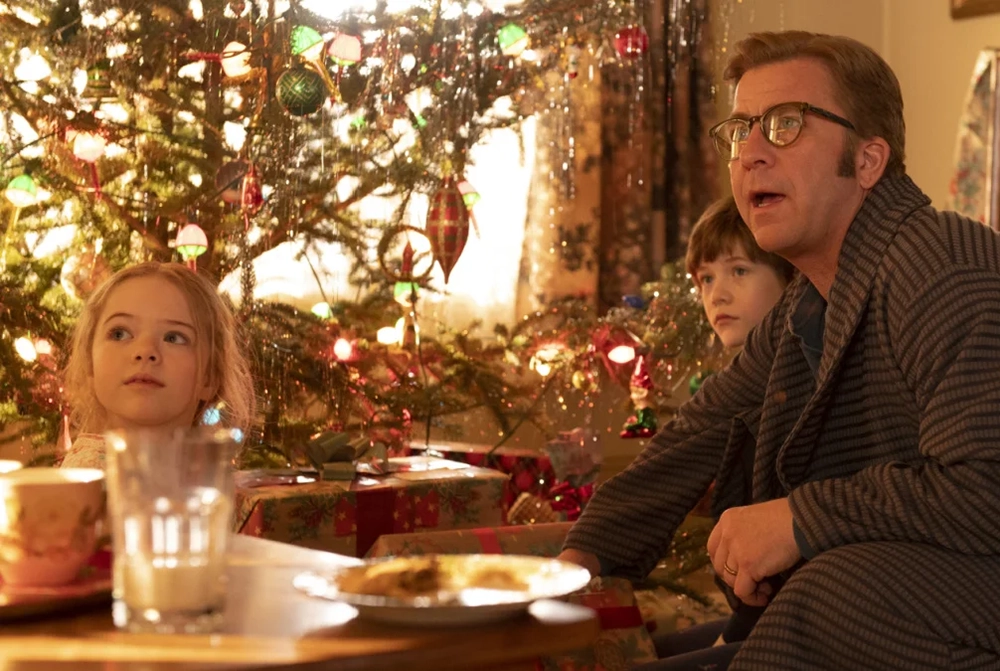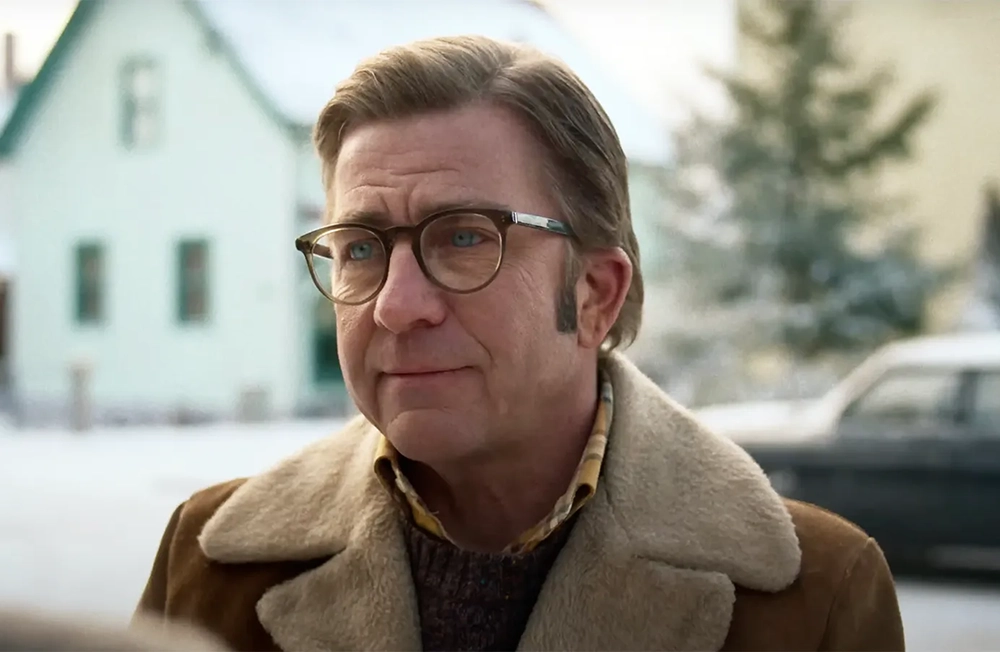“A Christmas Story” was an every-year watch for my family as a kid growing up. And this being the year of legacy sequels, it’s only fitting that “In God We Trust, All Others Pay Cash”—the source material for the original movie written by Jean Shepherd—is recalled once again in Director Clay Kaytis’ “A Christmas Story Christmas.” The film follows a grown Ralphie (Peter Billingsley, reprising the role), as he attempts to give his children the kind of Christmas his ‘old man’ would have wanted after he learns of his passing.
The story is written by Nick Shenk and Billingsley himself, which works on several levels. Firstly, Billingsely was in the original film. Here, he shows he knows what made that movie work, even though he was just a kid at the time. And second, Billingsley has never lost that love of Christmas movies. He appeared as a lead elf in John Favreau’s charming and timeless “Elf,” and brings that same spirit with him on this venture.
Returning to Hohman, Indiana
The film is playing on HBO Max (though a Warner Bros. production). It’s an interesting juxtaposition for a film that works hard to remain innocent. It calls back a time period (the original took place in the 1940s; this one takes place in the 1970s) that resists modernization at every turn. “A Christmas Story Christmas” paints its town of Hohman, Indiana the same way we remember Ralphie experiencing as a kid. The suburbs look the same, as does the downtown. The Higbees department store is still there, where kids still look in the window at all its splendor. Matthew Clark is the film’s cinematographer. And besides the realistic plot necessity that this film must take place in the ‘70s, one is quick to note that a filmmaker’s camera would be worse off had this been set in modern times, Hohman’s denizens glued to cell phones and the latest video games.
But where Kaytis’ film departs from the original and sends it in a warming, albeit ‘grown-up’ direction, is the dropping of the Norman Rockwell-type photography. The film focuses on Ralphie (er, Ralph, he’s an adult now), as he attempts the perfect Christmas for his family. His purpose is borne of a tall order. His mother calls his home on the outskirts of Chicago (his family visits them every year) to let him know that his father has passed away. Ralph’s old man, who loved Christmas more than life, died right before the holiday. It’s a forlorn moment, highlighted by somber camera shots. The ‘70s, teal phone with attached cord and mustard yellow walls add to the unreality of the moment.
Billingsley Plays a Great Adult Ralphie

Billingsley is great here, and the film does a fun thing and has him narrate the interior monologues spoken by Jean Shepherd in the original film. We follow him as he meets his old friends. We see Flick (Scott Schwartz), Schwartz (RD Robb), and the film even adds a fun appearance of Ralph’s old bully, Scut Farkus (Zack Ward), now the town cop. Ralphie’s reconnection with his friends make up some of the most charming scenes of the movies. Flick owns one of the two town bars, and it seems like the kind of place you’d see in any small town. And seeing how the first film took place from a child’s point of view, it was fun to see the town itself for the first time. There’s some fun scenes where Ralph introduces his children Mark and Julia (River Dorsche, Julianna Layne) and his wife (Erinn Hayes) to his past in Hohman.
What works the most about the film, however, is that while Kaytis and Billingsley lay on the nostalgia and fan service, it never becomes too much. “A Christmas Story Christmas” never becomes about these things. The Bumpus’ dogs are still there, as are town bullies and car breakdowns in old heaps long past their miles. There’s a quick homage to ‘the lamp’ and turkey dinners—but this film isn’t about that. It’s about a grown Ralphie, who longs to give his kids and family the perfect Christmas. Yes, it’s for them… but maybe mostly it’s for his old man, who meant the world to him.
A Legacy Sequel that Adds to the Original Without Spoiling It

The nicest thing about “A Christmas Story Christmas” is its innocence. It has necessity. It’s not a sequel for sequel’s sake, even though we’re knee-deep in legacy sequels. It feels warm. The script’s light on problems—though some convenient ones do exist—but heavy on nostalgia and heart. It harkens back to a simpler time. If “A Christmas Story” was meant to remind people like my parents of their Christmases growing up, this one reminds folks like me of theirs. It’s full of callbacks to innocence, times where kids learn simple lessons, where a broken arm was part of childhood and not a cry for alarm. I’m not sure the film will resonate with today’s youth. Or maybe it will. The first one took place in the ‘40s and I’m an ‘80s kid. This one will find its place too.
“A Christmas Story Christmas” is a solid addition to this holiday season. It’s smart, doesn’t lay it on too thick, and makes you feel warm and fuzzy. It was fun to see the old gang again (even Ian Petrella, who played Randy in the original, returns; regrettably Mrs. Parker is recast, played by Julie Hagerty). The film hits the hallmarks of trying to fill big shoes, grapple with loss, and sew it all together in a neat package. Like the original, things go wrong, but it all works out. The closing scene is heartwarming and sweet, and a nice wrap-up to a production 39 years in the making. If every Christmas at your house includes watching “A Christmas Story,” by all means do. But do yourself a favor and watch this too. You’ll be glad you did.
“A Christmas Story Christmas” is currently available to watch on HBO Max.



